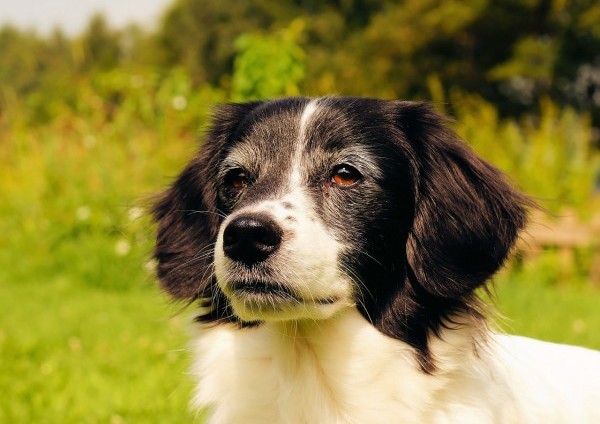Exercise Tips for Dogs With Arthritis
Unfortunately arthritis affects dogs in the same ways it does for us humans; by the time your dog is one year old there’s a one in five chance he’ll be showing signs of arthritis.
The trick to keeping an arthritic dog healthy is a balance of maintaining moderate regular exercise that’s low impact.
My dog was recently diagnosed with arthritis at the age of 3. To say it was a shock is an understatement. Although we don’t get to play frisbee everyday and go out for long games of fetch we’re making it work. By focusing on different exercises and a decent diet she’s doing extremely well.
Managing arthritis is something many of us dog owners will have to do at some point in our pets lives. It doesn’t mean all fitness and activity for your dog has to end — it just means you’ll have to adjust your exercise routine to come up with activities that are lower impact. Here’s a few simple exercise tips for dogs with arthritis.
Arthritis Is Extremely Common In Dogs
Arthritis is common joint problem among dogs. It’s estimated that 20% of dogs older than one year of age and 80% of dogs over 8 years of age are affected. Arthritis develops over time and causes joint tissue damage and inflammation. It’s Senior Pet Month so I wanted to focus on some exercise tips to keep our senior pets with arthritis active and healthy.
As in humans, canine arthritis becomes more symptomatic with age. More than half of 2-year-old golden retrievers show radiographic signs of degenerative joint disease, and more than 90 percent of susceptible dogs show signs by old age.
65% of all breeds of dogs between 7 and 11 years of age have signs of arthritis. Although arthritis can occur at any age the average of all dogs diagnosed is at 9 years of age. One in three of dogs diagnosed with arthritis is overweight.
Keeping your dog fit and trim throughout his life has been found to decrease the likelihood of developing arthritis.Unfortunately it’s not a guarantee and many of our pets are effected by arthritis already.
In dogs, several larger breeds are most prone to arthritis: golden retrievers, Labrador retrievers, German shepherds, Newfoundlands and St. Bernards.- University of Pennsylvania
Besides exercise there are certain supplements, medications, physical therapy treatments, and diets you can discuss with your veterinarian to help your dog manage the pain and symptoms associated with arthritis.
Since 2007 the prevalence of arthritis in dogs has increased by 38% – State of Pet Health
The Importance of Keeping Arthritic Dogs Active
You can help decrease the symptoms associated with arthritis by keeping your dog fit and active. The key is to find an exercise routine that’s right for your dog.
Arthritic dogs should stick to low impact exercises such as walking and swimming. They help keep your dog active without over exerting their joints. Arthritis dogs should not be encouraged to jump, walk on their hind legs or run long distances – these can make their symptoms worse.
Maintaining daily exercise sessions for your dog will help keep his weight under control. Obesity causes more stress to be placed on your dogs bones and joints which makes arthritis worse. Not to mention maintaining a healthy, lean weight for your dog is great for his overall health. It’s estimated a healthy body weight in a dog can add as much as 2 years to his life.
Exercise will also help keep their muscles strong which helps support and stabilize their joints; it’ll also help keep their tendons flexible and help circulate blood to stiff joints.
It is important that your arthritic dog get daily exercise to keep muscles strong, which will, in turn, support their joints.- Dr. Donna Spector DVM
Don’t Forget To Warm Up & Cool Down
You should include a warm up and cool down session into your regimen. You’ll want to keep the exercise sessions consistent. If you don’t have a current exercise regiment in place 15-30 minutes a day is a good place to start. You can increase your sessions once are confident your dog isn’t over exerting himself.
The warm up helps get your dogs heart rate up and it’ll help prevent sprains and cramps.
Keep in mind a dogs arthritis can become more painful after a period of rest, floors and beds don’t often have the necessary support needed to help arthritis. There are many products available specially tailored to suit dogs with arthritis, such as orthopedic dog beds, stairs to reduce jumping, and raised food bowls.
When resting after exercising with your dog you might want to consider a nice doggie massage. It helps them mentally calm down and can help improve their muscle aches and stiffness. Nice warm blankets can have a nice soothing effect on achy joints.
Great Exercises For Dogs With Arthritis
- Swimming is by far the most popular choice when it comes to low impact exercise. The water supports your dogs bodyweight and inhibits excessive, sudden movements. Swimming encourages a large range of motion and limits the amount of stress placed on joints. Swimming is great for a nice cardiovascular workout and helps maintain strong muscles.
- Walking is a great way to keep your arthritic dog fit and trim. If your dog isn’t active start start slow and build up your distance and pace over time. If your dog starts to show signs of pain or stiffness after a walk it probably means you overdid it for the day.
- Play hide and seek with your dog. It’ll help keep your dog mentally stimulated and gives you a chance to get in some fun bonding time even when it’s raining outside.
- Nose work games are fun, they get your dog moving around, and they’re mentally stimulating. Hide some of your dogs favorite treats and train him to put his nose to work by seeking them out.
To help keep your arthritic dog active engage in some interactive play throughout the day. Here’s a list of 33 indoor activities to keep your dog busy.


